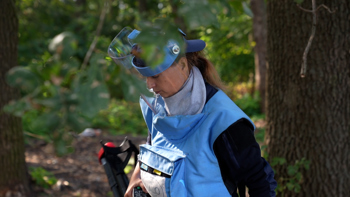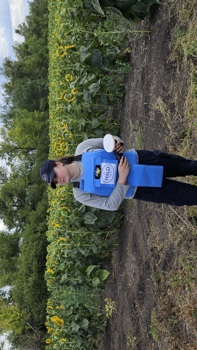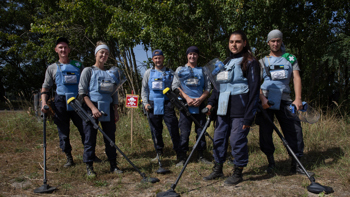HALO’s Ukrainian staff have conducted mine clearance in the eastern regions of Kramatorsk and Mariupol since 2015. At the start of the Russian offensive in February 2022 we were embedded in communities and uniquely positioned to respond rapidly to the crisis, coordinating an emergency response, including the delivery of life-saving risk education.
Since Russia's invasion we have built a new clearance operation, based near Kyiv, to respond to the urgent humanitarian need caused by mines, cluster bombs and other unexploded dangers. The expansion of our operations now encompasses mine-clearance, risk education and non-technical survey in Kyiv, Chernihiv, Sumy, Kharkiv, Kherson and Mykolaiv oblasts, risk education for communities in Dnipro and Odesa and non-technical survey in Donetsk oblast.
Ukraine is one of the breadbaskets of the world, but the country’s agricultural land has been decimated by mines and explosives. There have been estimates that up to 2 million landmines may have been laid since February 2022. The Ukrainian Government estimates that an area larger than the size of Greece will need to be surveyed for explosives. Making land safe is fundamental to save lives and support Ukraine’s long-term reconstruction and economic recovery.
Our Work

Clearing landmines & explosives

Teaching people how to stay safe

Surveying for explosives

Research & development
“Our family is all about public catering, and my big dream was always to become a chef in my own restaurant. With HALO, though, I realised that demining is actually much more important these days. Safety of all country is the first priority for me now”.
HALO’s work always starts with mine risk education and non-technical survey, which provide an immediate emergency response and a way to collect data about the type, scale and density of contamination in every settlement affected by the war. Non-technical survey is then followed by actual clearance, both manual and mechanical, from landmines and other ordnance.
Over the last three years HALO's Ukraine programme has also become a centre of excellence for research and development with the aim of making our work safer, quicker and more efficient.
Since the full-scale invasion, HALO has multiplied its efforts to address the vast amount of explosive contamination, employing 1,500 Ukrainian staff, nearly 30 per cent of whom are women. We are now the largest international mine action organisation in the country. With fleet, logistics and manpower already in place, HALO has been able to move rapidly in response to changes in the conflict thanks to the flexibility and extent of donor support. HALO also benefits from six previous years of strong links to the Ukrainian authorities and local communities and we continue to work in close collaboration today.
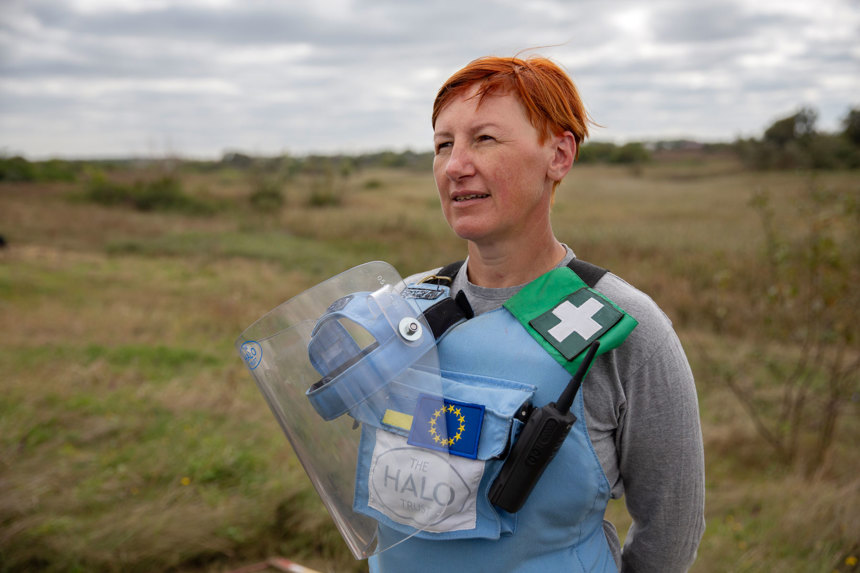
Evolving Operations
Mine clearance operations in Ukraine are intricate and challenging, with new explosive threats creating an extremely complex situation. In Mykolaiv and Kharkiv regions, over 70 per cent of minefields or battle areas assessed by HALO for clearance contain tripwire devices, magnetic influence mines (which can be activated by the presence of metallic objects and a change in the magnetic field around the mine), or seismic mines (activated by vibrations in the earth). In response, HALO Ukraine is transforming the approach to land preparation and clearance using advanced survey techniques and the targeted deployment of remote controlled clearance machines.
Drones are increasingly important. They are effective for quick and safe survey of territories and are now used in survey and clearance operations. HALO Ukraine is also using satellite photos of war-affected areas that are being analysed by AI in terms of the potential mine threat.
In 2024, HALO was the first international operator to be secure authorisation to use explosives to destroy items in situ. This important development allows HALO Ukraine to conduct full-cycle demining, making our work faster and more effective.
Thanks to the support of a number of donors, we are intensively trialling new machinery and processes so we can clear land more efficiently and safely.
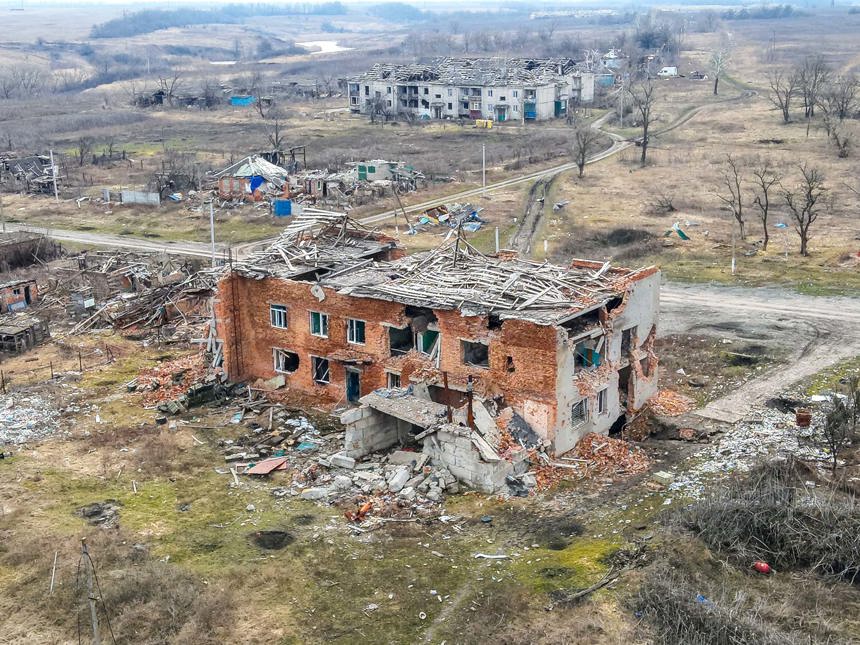
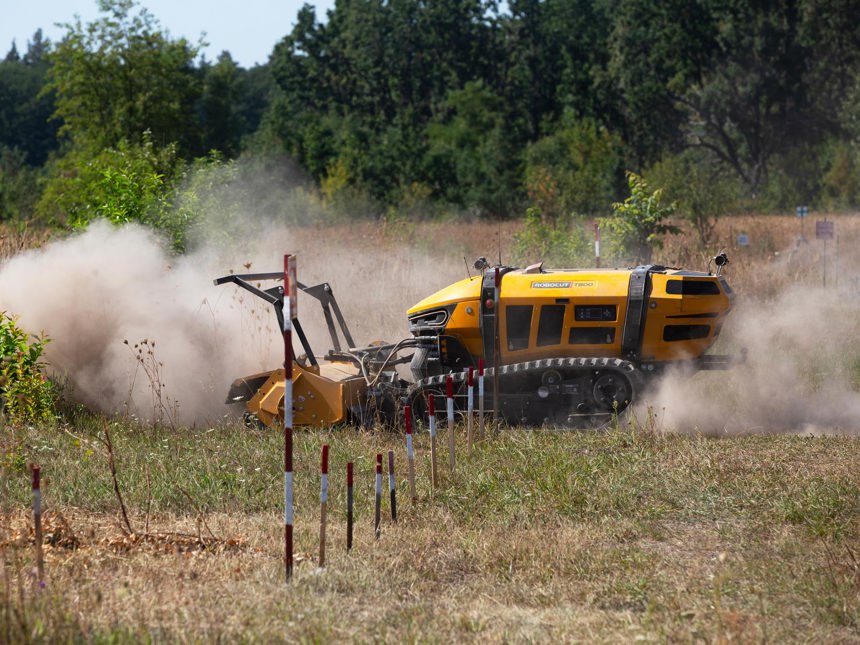


OUR IMPACT
“Completing the cycle gives you a special satisfaction from explosive ordnance disposal. While our survey and clearance teams are keen to find an item, we are the people sent to destroy it. After we’ve done our work, it’s gone.”
Our operations have achieved significant milestones since 2022, with over 8.3 million square metres of land cleared by Summer 2025, including vital agricultural areas, essential for food security. Ukraine is typically responsible for six per cent of all calories traded on the global market, and prior to the war, along with Russia, accounted for a quarter of global wheat and grains exports and 80 per cent of sunflower oil exports.
Our comprehensive approach has also seen the clearance of over 33,000 mines and explosives including over 10,000 anti-tank mines since the full-scale Russian invasion, underscoring our commitment to making Ukraine safer for its people.
In order to keep people safe from the mines and explosives, especially in newly liberated areas, HALO has also been running risk education sessions, in-person, online and via targeted social media campaigns. This includes launching a mine awareness e-course on the biggest educational online platform in Ukraine. Over 660,000 people have attended in-person and online sessions and HALO social media campaigns about explosives have had tens of millions of views since February 2022.
Three years on from the invasion, we continue our commitment to saving lives and restoring livelihoods in Ukraine.
Stories From Ukraine
CBS 60 Minutes
As seen on CBS 60 Minutes, uncover the critical work being done to rid the world of landmines and explosive remnants of war. Learn how HALO's efforts are saving lives and how you can help pave the way for a landmine-free future.


